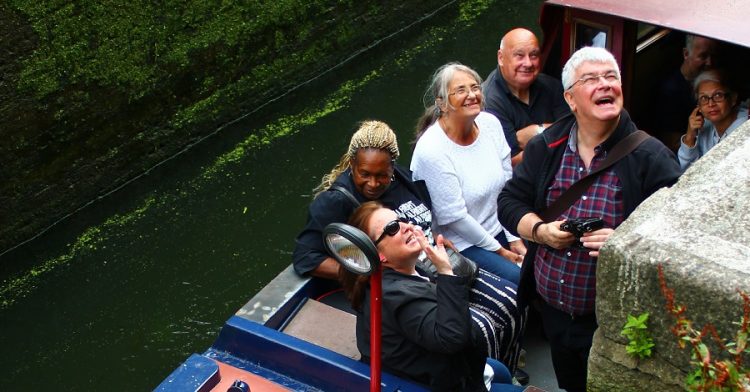This week on the blog we hear from Ageing Better in Camden’s Communications & Influencing Officer Lydia Shellien Walker, who tells us how a warm welcome is crucial to making community groups as friendly and inviting as possible.
Ageing Better in Camden is a partnership of older people and Camden organisations, drawing on existing skills and resources in the local community to tackle social isolation and loneliness. We have worked with 30 community organisations to reach over 7,000 people since the beginning of the programme in 2015.
What is a warm welcome?
We’ve been gathering the views of older people in our borough on how to make community groups as welcoming as possible, and what difference this makes. Older people identified a range of factors including meeting and greeting, introductions, seating arrangements, opportunities for social interaction and relationship building, fostering a sense of community and various communication strategies.
Why does a warm welcome matter?
A warm welcome has real impact on whether or not older people maintain attendance at community groups where there are opportunities to increase social contact and decrease loneliness. This is notable given that community activities are a central part of current policies and provision to decrease loneliness and social isolation for older people, and thus the resulting negative health implications. It is particularly important to consider in the context of expanding social prescribing services which rely on high quality and welcoming community activities.
How can I create a warm welcome in my community group?
- Staff are key – the ethos of a welcoming group is critical, with an explicit recognition of, and commitment to, providing a welcoming environment. This should be a top down approach from senior management to volunteers and requires buy-in from all front facing staff.
- Staff embody the welcoming ethos – through their personalities and commitment to carrying out the various tasks identified as creating a positive welcome, and in modelling welcoming behaviour so that the entire group takes on the shared responsibility of a welcoming atmosphere.
- This is a particularly critical responsibility for facilitators, whether they are teaching a skills-based class only or employed to coordinate several groups – they are the face of a group/organisation for older people. There should be an explicit expectation that they are responsible for creating a welcoming environment. This responsibility needs to be enabled through appropriate resourcing and training.
- Creating a welcoming group needs to be planned for in terms of both responsibilities and resources. Friendliness should be explicit in planning and not assumed to be an inherent part of providing community activities nor contingent on individual practice.
- A welcoming approach needs to be built into activity design – to allow opportunities for social interaction whether throughout a session or at times around it. Facilitators should be able to spend time with individuals and participants need to have time to talk together either during or after an activity.
- Resources include time – facilitators need enough time to spend with individuals during an activity and potentially for some contact outside it. Most older people appreciated activity reminders, and for some, additional check-ins helped them to feel cared for and contributed to a sense of group membership. There were a few examples where this had enabled people to return to community activities; others had not been in this position so did not feel the need for this type of support.
- Older people also contribute to whether a group is welcoming or not, by having positive social interactions and making an effort to be friendly to all, but it is challenging for them to do this if the environment is unwelcoming or unfriendly to start with. It is a shared responsibility, which should be organisation-led. Facilitators need to manage group dynamics which allow friendships to form, which encourage attendance, but also ensure new people are able to join without feeling excluded from those relationships.
For more information, visit the Ageing Better in Camden website to read the full report.
A note on Ageing Better in Camden:
Ageing Better in Camden is part of Ageing Better, a programme set up by The National Lottery Community Fund, the largest funder of community activity in the UK. Ageing Better aims to develop creative ways for people aged over 50 to be actively involved in their local communities, helping to combat social isolation and loneliness. It is one of five major programmes set up by The National Lottery Community Fund to test and learn from new approaches to designing services which aim to make people’s lives healthier and happier.

